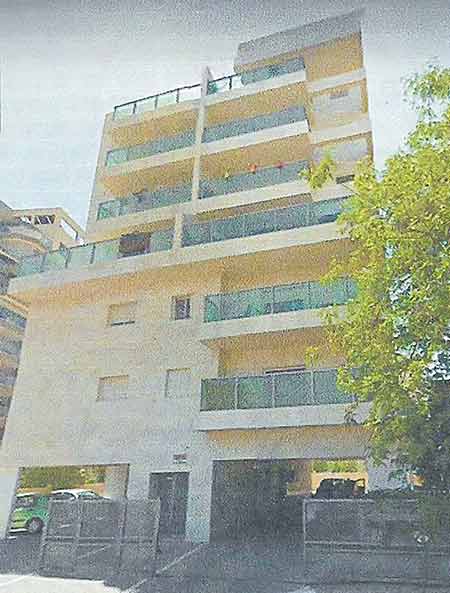
Editor’s Note: The original column referenced appeared in the March 2021 issue of Pumps & Systems. Access
this article at pumpsandsystems.com/author/lev-nelik.

In my March 2021 article, we discussed a case of troubleshooting a small heating, ventilation and air conditioning (HVAC) system. The two-pump clean water pressure boosting system had several issues, including noisy operation, frequent starts and stops of pumps, emergency supply tank concerns and controller issues. While physically small, the system had big problems as far as residents were concerned. When pumps’ start-stop noise propagates through a residential building at 2 a.m., all residents want is the problem to quickly go away, without needing a doctoral degree in pump hydraulics. Our frequent reader, Lee Ruiz, offered a few tips to address the issue, and his comments are noted below, followed by my response.
Dr. Nelik,
As always, I enjoy and appreciate your interesting articles. In response to the March 2021 article, “Troubleshooting HVAC Pumping Systems,” I’ve offered some comments below.
If only one of the two pumps can meet requirements, and if vibrations come from just one of the motors, why not only use the better pump until the other pump is required? Maybe the offending pump can be repaired/replaced during its downtime. Otherwise, some form of vibration isolation (e.g., motor restraints, rubber expansion joint) might be considered until the problem can be properly fixed.
It seems that the new 4-bar set point has resulted in a satisfactory solution with the pumps rarely starting for now. In the future, however, if water supply pressure continues to drop, these pumps may again come online more frequently. At that point, if the municipality doesn’t or can’t increase service pressure, something like a city water tower might be considered to keep the pumps from continuously starting and stopping. A water reservoir could be constructed on the roof with enough storage for an estimated day/s usage. The pumps would then only need to run when a minimum tank level is reached.
Along with an eventual thorough analysis and field testing of the entire pumping system, some of the apartment piping might also be checked for repairs or design considerations.
Regards,
Lee Ruiz
Oceanside, California

Nelik’s Response
Lee, thank you for your input—as usual, helpful and insightful. The uniqueness of this case is the very nature of the application, not particularly in the degree of technical difficulties but where it is actually taking place—a relatively small residential apartment building. Unfortunately, folks in such situations are stuck between a rock and a hard place—they do not know anything about pumps nor do they have technical resources or money to pay for upgrades or repairs. Their only hope is that a local municipality will listen to their appeal with a sympathetic ear, and quickly. Even in “normal” times, such hopes for governmental jump-through-hoops efforts are naïve, and times like we are currently experiencing with COVID-19 make it nearly impossible to get real help—leaving people to be woken up at night by a pumping system that has been out of whack for months.
I came across this problem simply by a call from a friend who happens to live in this building and suffers, just like the rest of the residents, from sleepless nights due to this problem.
My usual “field laboratory” is with large boiler feed pumps at power plants, cooling water pumps at municipal plants, paper mills, refineries, etc. I do not come across relatively small issues like this, where a $1,000 pumping system creates a huge issue for the residents of a building. And that is what was happening here.
My approach was, essentially, to do whatever “MacGyver-special” fix I could come up with, with essentially no time, money or even access to any manuals, instruction books, maintenance records or the like. Thus, my first question was: Why use the pumps at all? If the city water is mostly adequate, and only drops below set pressure rarely (usually at night, and even then for an hour or so), why just not live with that? Take a shower earlier, go to bed and wake up in the morning when the city water pressure is back to normal?
Well, that solution did not go well for the residents. I guess people were enjoying taking a shower at 2 a.m., and so we went further with our thoughts.
Dropping set pressure below set point was my next idea, and all I needed to ascertain was that I did not force it too low so that the pumps would not be capable of pumping water up to the roof. That required some calculations and a few hours of “field testing” at night, which answered my question. The lowered set pressure was proven to be still high enough to ensure that water reached the roof.
In a usual (industrial) situation, the margin of error, which I was forced to reduce, would not be acceptable (more drop in set pressure and there would be no piping at all). But in this case, we had no choice and had to squeeze-by-the-wire. It worked.
The problematic pump, regarding bad bearings, became not so problematic in residents’ eyes. If the pumps no longer come online, why pay money to repair them? Well, I am sure you know that would not fly in any industrial application situation (it is not “their” money), but the residents were reluctant—and I must confess I understand their feelings—to spend money on something that was not a problem now. Later? Well, then we will talk.
Besides, being a communal project, who would people hire to complete a repair? Usually, a local garage shop owner was hired for a job like this, and while he would be fooling around understanding which way to hammer a bearing over a shaft, the remaining pump might be left for months by itself, and thus if it fails, no more margin of defense at all.
A water reservoir on a roof, as you suggested, is not a bad idea for an industrial plant, but again here, for a group of residents of a building, who will lead the effort? Who will coordinate? And so, a good idea, but the wrong audience.
This is where it stands today. The system works, one pump is on standby and will work fine if needed. The second, with a bad bearing, is also on standby and will also pump water if needed, although it will wake up some sleepy neighbors. And after a few years, when more construction puts up more buildings nearby and the city water will no longer be sufficient even for this fixed system I “MacGyvered-up,” they will call me again.
Then, perhaps it would be time to replace the entire system. And somebody would eventually have to pay for that, although perhaps some of the new residents will have “friends in high places” and would be able to either talk a local municipality into taking care of their water pressure or buy a new booster pumping system.
To be frank, I actually enjoy working out smaller but unusual pumping systems even more than handling 5,000-horsepower (hp) huge, vertical turbine pump issues at a refinery. Why? It is a lot of fun and makes people happy. And isn’t this, after all, what it’s all about?
When it works, the appreciation of the people I helped is genuine and sincere. And that is a good thing.

